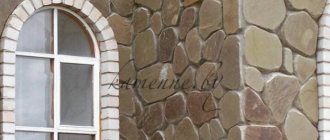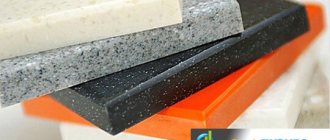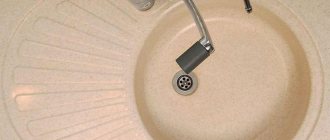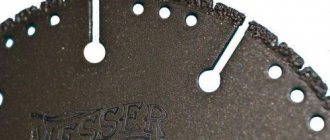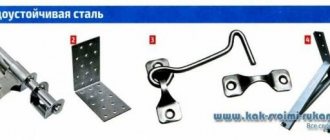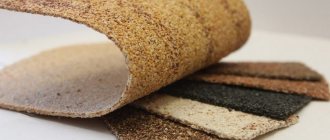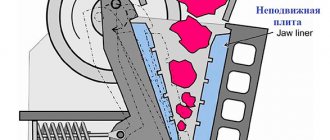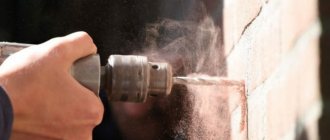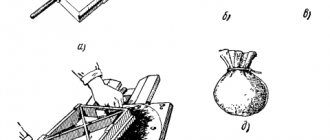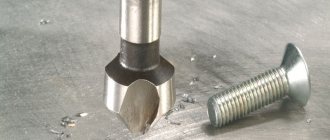Tumbled stone is produced using a unique technology. As a result, the material acquires improved quality characteristics. Polishing and grinding ensure a smooth surface. In addition, using tumbling you can obtain a product of the required shape (both standard and non-standard). All procedures are performed using tumbling equipment.
Areas of application
Finishing material is in demand in many industries, due to its quality and variety of color palette:
- Jewelry industry. A targeted impact on natural stone allows you to smooth out sharp edges, due to which the material becomes smooth. Elegant stones are used to make bracelets, pendants, pendants, key chains, etc.
- Decoration of facades. This solution is chosen by designers for finishing the facade and basement. Galvanized stone can be used both for exterior decoration and for decorative purposes.
- Interior design. Natural stone processed using special technology is suitable for finishing indoor walls. It is considered a classic option when decorating home fireplaces. An island made of rounded natural stone will harmoniously fit into any style.
- Design of artificial fountains and ponds. Against the background of water, the stone will look even more attractive. An excellent option for creating unique design compositions. It is customary to decorate aquariums with small stones.
- Landscape design. The material is suitable for laying garden paths and finishing fences. Natural material is able to cope with mechanical loads and sudden temperature changes, so there are practically no operational restrictions.
- Construction of coatings. Galvanized stone is used to decorate summer terraces, walking and pedestrian areas. This area is durable, copes well with moisture, and does not require special care.
Types and technologies of tumbling
Various equipment is used for stone tumbling, and the process itself can be carried out in several ways. This depends on the characteristics of the material, the type of mixing and the abrasive. The most popular are tumbling drums, which can be made in several modifications.
A filler is also used for processing, which is actually a medium for processing workpieces and providing the desired characteristics and required roughness. The movement of filler and parts takes place in the working space of the drum.
Machines can be:
- mechanical;
- electromagnetic.
The former can be equipped with rotating drums or vibration-controlled drums.
Tumbling drum
Tumbling drum
The simplest and most affordable machine designed for finishing. The design is a multifaceted cylindrical drum. May have a vertical, horizontal or angular relationship to the axis.
The starting mechanism is an electric motor. The process of cleaning and finishing the stone is carried out by freely mixing the stone with abrasive particles. The drum is popular among jewelers.
Tumbling towing rig
Less popular equipment compared to the previous one.
The operating principle looks like this:
- fixing the product on the spindle;
- starting the movement and placing it into a work surface filled with abrasive.
Tumbling Towing
When the filler comes into contact with the product, a thin layer is quickly removed from the surface of the stone. To add or update the filler, you need to change the direction of the spindle in relation to the container or connect a vibration drive.
This installation does not allow you to simultaneously work with a large batch of stone, which is considered the main disadvantage. The advantage of such equipment is the high quality of finishing.
Centrifugal type rotary machine
This installation is one of the modern equipment for finishing. The design includes a vertically fixed stationary compartment, a rotating plate and blades. The compartment is a container for the working mixture. The latter begins to move under the influence of rotation of the actuator.
In the fixed zone there is a special profile that ensures the correct path of movement of the abrasive.
Installation disadvantages:
- inability to process large parts;
- accelerated wear of the internal space due to constant impact from the actuator.
Advantages:
- high productivity (the unit works faster than any other tumbling equipment);
- possibility of simultaneous processing of large batches;
- option for adjusting rotations to give a special property to the surface of the stone;
- quality of finishing.
The machine is used in a professional environment because it has an impressive price.
Tumbling vibrator
Such equipment is widely used in the jewelry industry. Traditional drum design, equipped with a vibration drive on the body. The drum serves as a container for tumbling mixture and materials. Special compounds (compounds) are intended for wet processing.
Tumbling vibrator
The machine is powered by an electric motor with a vibration drive. Oscillatory movements provide a certain speed of movement of materials. As a result of this impact, a ground and polished stone is obtained.
Pros:
- versatility (the machine can be used to process any stone);
- ability to work with large batches;
- high processing speed;
- Can be used for finishing fragile and soft materials;
- the ability to control the process at all stages.
The only negative is the high cost of the equipment.
Types of tumbling
Depending on the purposes, several types of tumbling have been developed. Today the following types are distinguished:
- rotary;
- vibration
The essence of rotary tumbling is the interaction of the metal being processed and the abrasive inside a rotating drum. The quality of material processing using this method is quite high, but the speed and efficiency are quite low.
Therefore, the most common is the vibration method. Vibration of the abrasive occurs due to the vibration drive on which the working container is installed. Surface treatment occurs faster and with better quality. The peculiarities of the method make it possible to process workpieces of any size and shape.
Also, depending on the type of filler, tumbling is divided into:
- dry;
- wet.
The dry method involves the use of conventional abrasive filler. The wet method is based on adding water, usually mixed with a coagulant, to the working container. This method is more effective and allows for better cleaning and polishing of the surface. The wet method is indispensable in cases where the workpiece needs to be prepared for the application of enamel or galvanic coating.
There is also a classification based on the type of equipment used:
- drum tumbling;
- planetary tumbling;
- centrifugal tumbling.
Characteristics of tumbled stone
The main characteristic of stone after tumbling is thickness. It is determined by the thickness of the feedstock, the scope of use, the technology and equipment used. Galvanized stone has a perfectly smooth surface on the front side and therefore does not require finishing polishing. That is, the material is suitable for use after tumbling.
Another characteristic is the tint range. It is determined by the type of mineral and can vary from light pastel colors to dark gray.
Galvanized stone has better properties compared to non-galvanized stone. It is resistant to moisture and sudden temperature changes.
Tumbling fillers
The type of filler directly determines the degree of final processing, be it polishing or grinding the material. The filler for tumbling is selected in accordance with certain requirements. First of all, you need to pay attention to the following factors:
- Material type.
Depending on the type of part used, the abrasive is suitable for finishing ceramic, wood, porcelain, plastic, sand, glass or even nut shells.
- Size of material for tumbling. The size must be selected in such a way that the balls can penetrate small holes, recesses and other hard-to-reach places in the part without getting stuck in them.
- Selection of the shape of the abrasive body. The degree and quality of processing depends on the shape of the body. Depending on the goals, a prism shape can be selected, which allows you to qualitatively get rid of burrs, rounding edges and primary grinding, a cone - for polishing and smoothing smooth surfaces, and a ball - for processing products of complex shapes.
- Select an abrasive based on the required abrasive properties. The degree of processing can vary, from primary grinding to remove large cracks and burrs, to polishing to give a smooth, shiny surface. For example, ceramic tumbling fillers are excellent for rough finishing and large layer removal.
Today, the market offers a huge range of abrasive materials, both domestic and imported. It is worth noting that the quality of the filler practically does not vary depending on the manufacturer. Therefore, you don’t have to overpay when purchasing filler. You can only take the manufacturer into account when choosing plastic, since the performance characteristics and service life depend on the quality of the raw materials.
If you plan to use tumbling equipment for home purposes and processing simple metal parts, it is not necessary to purchase factory filler. Depending on the purposes of processing, improvised materials such as pebbles, finely broken glass or the remains of broken ceramic dishes can be used. For small equipment, 10 liters of such filler will be enough, which can be used repeatedly.
With proper operation of tumbling equipment and selection of appropriate filler, high-quality processing of workpieces can be achieved. The efficiency of tumbling significantly exceeds the efficiency of manual processing.
Stone tumbling at home
You can process the stone yourself using a concrete mixer or manually. The manual process is quite lengthy and labor-intensive. But the quality of material processed manually will be an order of magnitude worse compared to professional processing.
Tumbling stone using a concrete mixer
A concrete mixer will remove dirt and perform rough grinding. The starting material must be placed in the unit, an abrasive or detergent must be added, and put into operation. Experts recommend closing the drum window with a lid.
This method is suitable for tumbling medium and large products. It is not recommended to tumble small samples in this way due to the high risk of damage.
What is tumbling?
Tumbling is the name given to stones of a natural, slightly rounded shape, polished on all sides. Most often, such inserts are used in beads, bracelets and necklaces.
This is one of the few methods of stone processing that is performed automatically: jewelry made from gems processed in this way is the most accessible.
Raw stones of similar size, shape and hardness along with abrasive powder are poured into a metal drum. The whole structure rotates and rattles (sometimes for several days), after which it produces nice polished pebbles. All that remains is to drill holes for the thread - and you can assemble the decoration.
But handmade tumbling is especially valued and most beautiful. The fact is that pebbles rotating in a drum are evenly ground down on all sides, and natural material, as a rule, has rather deep cavities and cracks. As a result, by the time all the defects are sanded away, very little remains of them. Working with each stone individually, the master can “pull out” a much larger volume from a natural pebble of the same size, and, in addition, leave only that part of it that has the most expressive pattern.

